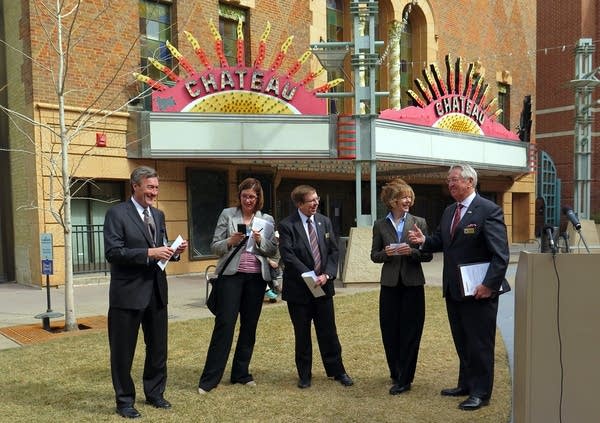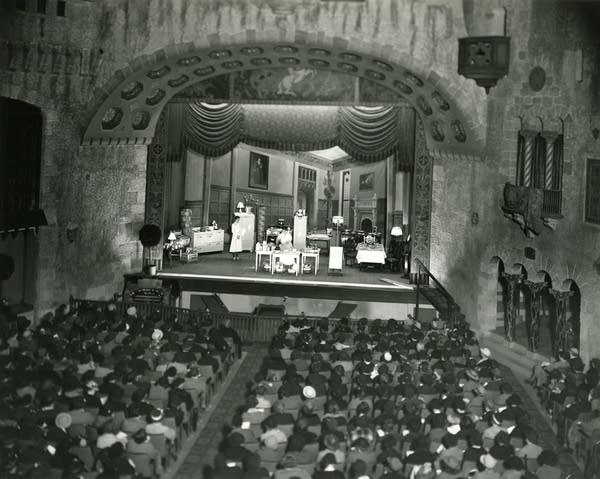Rochester’s Chateau Theatre: A historic venue that’s about to get a second act

by Brenda Tran
April 03, 2015
A couple weeks ago, the city of Rochester announced its plan to buy the Chateau Theatre. The building was used as a Barnes & Noble from 1994 up until Dec. 31, 2014; since then, it has been vacant. Why is the venue's future important? In part, because of its storied past. To put it briefly, the Chateau Theatre was once an epicenter of entertainment and culture in Rochester.
The Chateau Theatre opened on Oct. 26, 1927. It took nearly seven months and a then-unheard-of $400,000 to build. The ornate interior resembled a 14th century French village; it boasted 1,500 seats, hand-painted beams, balconies, turrets, and a castle wall, among other features. The auditorium even had stars twinkling in the ceiling—floating clouds included. The theater also had the latest technical equipment and theatrical apparatuses. The stage came with footlights and more than a dozen backdrops, and an elaborate switchboard controlled thousands of lights.
The theater hosted a variety of entertainment such as vaudeville, movies, and live theater. It had a wide range of memorable visitors, including actress Ethel Barrymore, famed German-American contralto Madam Ernestine Schumann-Heink, and the legendary stage duo of Alfred Lunt and Lynn Fontanne. Oh, and there was also Mary, the 3,500 pound rhino that co-starred in Tarzan. There were plenty of notable shows, including The Green Pastures, a Pulitzer prize stage play that came to town in 1931; Coe Glade in Bizet’s Carmen in 1936, and Elizabeth Taylor in Cynthia, which celebrated the Chateau’s 20th anniversary in 1947.
The Chateau has a rich music history as well. In addition to hosting touring Broadway shows, the theater was used for music concerts. Visiting orchestras put on symphony concerts, and on occasion famed organists Eddie Dunstedter and Ramona Gerhardt of Minneapolis would play shows. The theater also had its own orchestra, conducted by William G. Marlowe, a well-known Twin Cities orchestra leader. His orchestra of 12 musicians provided entertainment in the form of classical music and sound effects for vaudeville shows. Perhaps one of the most impressive hired musicians was Francis Richter, a blind organist. Back during the silent film era, he would play music for the shows. His wife would sit by him and whisper to him the information he needed to fit his music to the mood of the film. He was reputed to know 2,500 compositions by heart.
Even after the days of vaudeville and old Hollywood, the theater remained an important part of the townscape. While it may be asking too much to restore the Chateau to its glory days with celebrities rolling up in limousines, organ novelty, and velvet ropes, many residents have expressed support for its revival as a multi-use performing arts center.
The city has proposed to buy the Chateau Theatre for $6 million, with the Mayo Clinic offering to chip in $500,000. If the city buys the theater (the City Council will vote on the purchase on Monday), it will be a part of a massive economic redevelopment plan with the goal of establishing Rochester as a global medical destination.
Below are three views of the Chateau Theatre in 1936, courtesy of the History Center of Olmsted County. Seen at top: an on-stage cooking class.



Brenda Tran is a Rochester native who now attends the University of Minnesota—Twin Cities. She is the co-founder of the obscure magazine The Midwest Argonaut and is an avid supporter of all things Beyoncé, dry humor, and gouda cheese.

